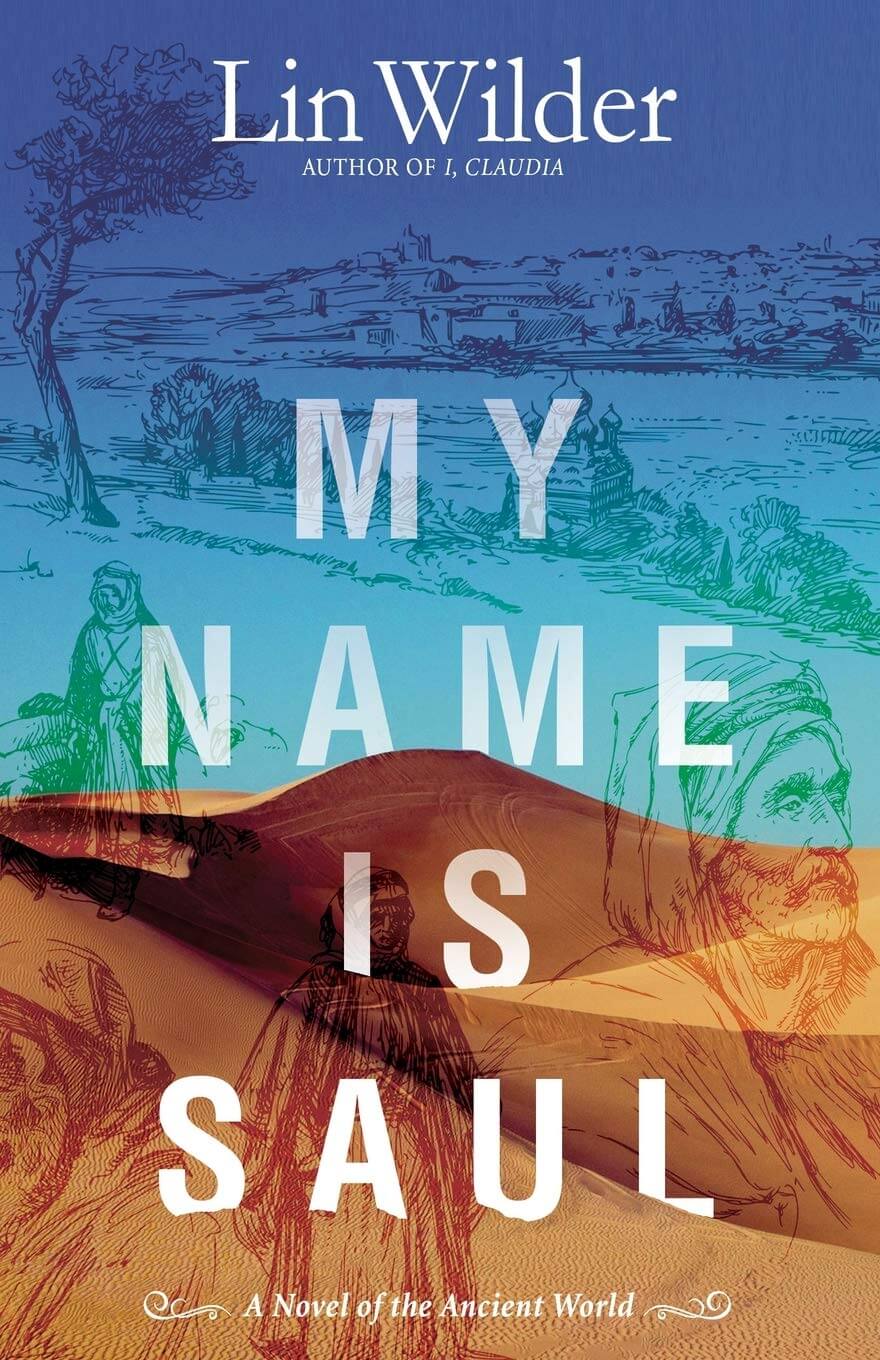Genre
Audience
Author’s Worldview
Catholic
Year Published
2020
Themes
Reviewed by
G.M. Baker
There is perhaps nothing more difficult to portray in fiction than a religious conversion. The great Evelyn Waugh spent the whole of Brideshead Revisited preparing for the conversion of Charles Ryder but ended the main narrative without showing the moment of conversion. In the concluding frame story, he shows that the conversion has occurred by one small gesture in the Brideshead Chapel. The task that Lin Wilder sets herself in My Name is Saul is daunting: to create a novel whose climax is the conversion of St. Paul, perhaps the most famous and most dramatic conversion story in all of history. In the end notes, Wilder acknowledges the difficulty of the task she has set herself, and I think the book should be read in that spirit, of a Herculean task bravely attempted.
Wilder takes the probably wise step of distancing her narrative from her subject by the device of making her narrator Aurelius, the young Roman legionary who guards St. Paul in his prison cell before his execution and becomes his disciple. Aurelius presents himself as Paul’s secretary, recording his life story on the night before his death. The narrative is thus sometimes Aurelius and sometimes Paul as recorded and edited by Aurelius. Aurelius himself complains about the difficulties of organizing the narrative, saying at one point, “I realize that the story of his early life could not be conveyed linearly, sequentially. Saul of Tarsus’s unique journey … could not be fashioned conventionally or constrained by literary convention.” A fair assessment of the problem, I think.
And so, we must take the narrative of My Name is Saul in this spirit and be frank about what the resulting story achieves and where it does not quite reach the summit of its lofty ambitions. The first thing to note is that it is not written like a conventional novel but as a fictional autobiography interspersed with commentary by its fictional editor, Aurelius. Thus, it gives up the emotional drive of a conventional story for a more reflective voice. It moves from incident to incident, with much commentary by Saul on his feelings and motivations, or, rather, commentary by Paul on Saul’s feelings and motivations, since the book is at some pains to present Saul and Paul as distinct people, though one flesh. It is more confessional than psychological. More didactic than dramatic. More autobiography than novel.
The prose is crystal clear and easy to read. Its evocations of time and place are convincing. Anyone interested in the life of St. Paul prior to his conversion will find much here to chew on, bearing in mind that much of the early life, including the marriage, is an invention. The author has clearly done her research, cites her sources faithfully, and is clear about which parts of the story are invented. The account that the book gives of Saul’s life is more thought than felt, but some might consider that an advantage rather than a drawback. Perhaps it had to be so, given the difficulty of giving a felt account of such a monstrous transformation of such a monstrous man.
There are two parts to the narrative. The first is a largely invented account of Saul’s childhood and a marriage for which there is no historical or scriptural evidence, and the second a more historically-based account of his time as an agent of the Sanhedrin persecuting the early Church and leading up to his conversion on the road to Damascus. The difficulty is that the first part of the story creates a sympathetic portrait of Saul, which the second half does not quite manage to reverse. It does not manage to convince me that the loving and sympathetic man portrayed in the first half becomes the monster who actively campaigns for the persecution of Christians in the second half and begs to be given command of the forces that carry it out. While Paul’s narrative constantly asserts his fall into zealotry and murderous anger, I can never quite believe it at an emotional level. The roots of his conviction are well established, but the roots of his anger are more stated than felt. Having succeeded too well in making Saul seem human, the book has too steep a hill to climb to make him a monster.
A curious aspect of the first half of the story, the part dealing with childhood and marriage, is Paul’s attitude to marriage and its pleasures. The St. Paul of the epistles grudgingly grants that those who cannot control their sexual desire should marry rather than burn but regards marriage as a distraction from the proper end of serving God. Yet the Paul of the novel, even when confronted with his own words from the epistles, celebrates the joys and pleasures of marriage with great delight and heartily recommends that Aurelius should marry rather than remain celibate as he intends.
There is one particularly curious passage in which Saul, after six years away from home studying in Jerusalem, writes to his childhood sweetheart, Hannah, whom he last saw when she was eleven, and tells her that he dreams of the body he imagines she has developed since he saw her last, and what he describes as “the consummation of a love I have long denied.” He follows this with a proposal of marriage, and it is hard to imagine a young woman receiving this missive and not being a little creeped out by it, particularly since Saul has not answered any of her letters to him for the past six years. Indeed, the character of Hannah seems too good to be true in many ways, almost like a character from a fairytale, in contrast to the more subtly-drawn and realistic characters of the rest of the cast.
Similarly curious is Aurelius’s afterword in which Aurelius describes how he met his own wife, also named Hannah. This Hannah claims to have seen Aurelius in her dreams long before meeting him and to have been waiting for him so they could marry. Clearly, this afterword brings back the theme of the joys of marriage from the earlier part of the book, but it seems a curious note to end on following the main theme of the conversion, imprisonment, and death of St. Paul.
While it seems to want to distance itself from biblical fiction, both by its title, which seems to emphasize that it is the story of Saul, not Paul, and by the epigraph “A Novel of the Ancient World,” I think the book will chiefly be of interest to believers seeking an account of the early life of one of the most vital but enigmatic figures of the early Church. The book certainly paints a very convincing portrait of the time, both in its setting and in its way of life and habits of thought. Such a reader, however, is encouraged to consult Wilder’s notes if they want to know which parts are based on fact and which are invented.
We live in an age of safe formulas and predictable results. This is not that kind of book. It aims for the stars and reaches the moon. That is no small accomplishment, and if we want to see more ambitious and more varied works, we should reward those writers who attempt them with our attention.



